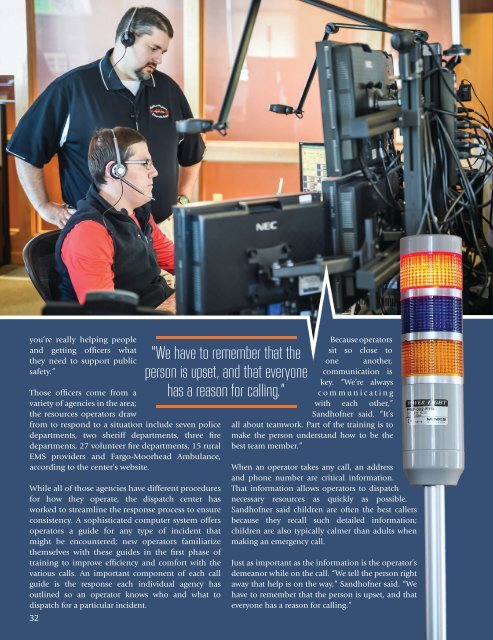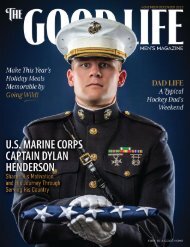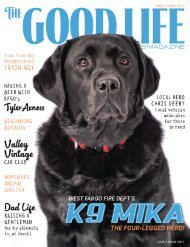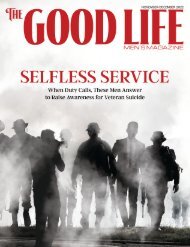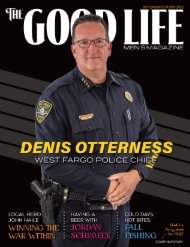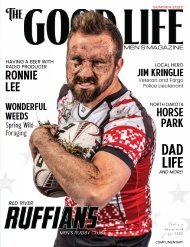The Good Life – July-August 2015
Fargo Moorhead's premier men's magazine. Featuring the ultimate outdoorsman Bret Amundson, the Hot Rod Shop of Fargo, FC Fargo Soccer Team, Prairie Rose Meadery, Fathers, Local Heroes - Red River Regional Dispatch and more!
Fargo Moorhead's premier men's magazine. Featuring the ultimate outdoorsman Bret Amundson, the Hot Rod Shop of Fargo, FC Fargo Soccer Team, Prairie Rose Meadery, Fathers, Local Heroes - Red River Regional Dispatch and more!
You also want an ePaper? Increase the reach of your titles
YUMPU automatically turns print PDFs into web optimized ePapers that Google loves.
you’re really helping people<br />
and getting officers what<br />
they need to support public<br />
safety.”<br />
Those officers come from a<br />
variety of agencies in the area;<br />
the resources operators draw<br />
from to respond to a situation include seven police<br />
departments, two sheriff departments, three fire<br />
departments, 27 volunteer fire departments, 15 rural<br />
EMS providers and Fargo-Moorhead Ambulance,<br />
according to the center’s website.<br />
While all of those agencies have different procedures<br />
for how they operate, the dispatch center has<br />
worked to streamline the response process to ensure<br />
consistency. A sophisticated computer system offers<br />
operators a guide for any type of incident that<br />
might be encountered; new operators familiarize<br />
themselves with these guides in the first phase of<br />
training to improve efficiency and comfort with the<br />
various calls. An important component of each call<br />
guide is the response each individual agency has<br />
outlined so an operator knows who and what to<br />
dispatch for a particular incident.<br />
32<br />
"We have to remember that the<br />
person is upset, and that everyone<br />
has a reason for calling.”<br />
Because operators<br />
sit so close to<br />
one another,<br />
communication is<br />
key. “We’re always<br />
communicating<br />
with each other,”<br />
Sandhofner said. “It’s<br />
all about teamwork. Part of the training is to<br />
make the person understand how to be the<br />
best team member.”<br />
When an operator takes any call, an address<br />
and phone number are critical information.<br />
That information allows operators to dispatch<br />
necessary resources as quickly as possible.<br />
Sandhofner said children are often the best callers<br />
because they recall such detailed information;<br />
children are also typically calmer than adults when<br />
making an emergency call.<br />
Just as important as the information is the operator’s<br />
demeanor while on the call. “We tell the person right<br />
away that help is on the way,” Sandhofner said. “We<br />
have to remember that the person is upset, and that<br />
everyone has a reason for calling.”


